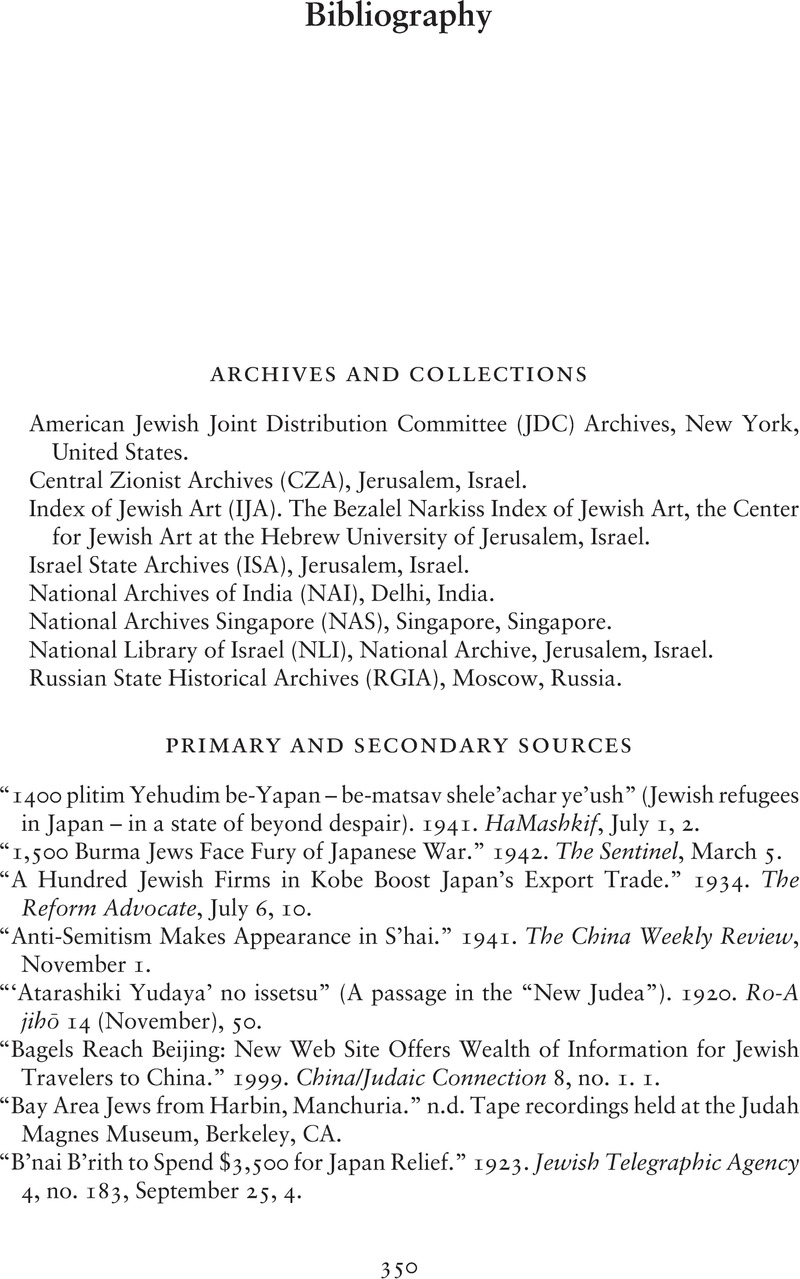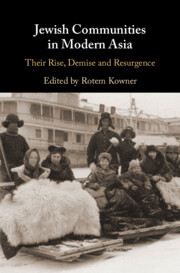Book contents
- Jewish Communities in Modern Asia
- Reviews
- Jewish Communities in Modern Asia
- Copyright page
- Epigraph
- Contents
- Maps
- Figures
- Tables
- Contributors
- Acknowledgments
- Note on Translations and Conventions
- 1 Jewish Communities in Modern Asia
- Part i Central and North Asia: Old and New Communities in Russia’s Shadow
- Part ii South Asia: Identity and Culture in British and Independent India
- Part iii Southeast Asia: Colonial Legacies and Emerging Communities
- Part iv East Asia: Communities and Strife in the Sinosphere
- Part v Imaginary Asia: Lost Peoples and Invisible Communities
- Conclusion
- Bibliography
- Picture and Map Acknowledgments
- Index
- References
Bibliography
Published online by Cambridge University Press: 11 August 2023
- Jewish Communities in Modern Asia
- Reviews
- Jewish Communities in Modern Asia
- Copyright page
- Epigraph
- Contents
- Maps
- Figures
- Tables
- Contributors
- Acknowledgments
- Note on Translations and Conventions
- 1 Jewish Communities in Modern Asia
- Part i Central and North Asia: Old and New Communities in Russia’s Shadow
- Part ii South Asia: Identity and Culture in British and Independent India
- Part iii Southeast Asia: Colonial Legacies and Emerging Communities
- Part iv East Asia: Communities and Strife in the Sinosphere
- Part v Imaginary Asia: Lost Peoples and Invisible Communities
- Conclusion
- Bibliography
- Picture and Map Acknowledgments
- Index
- References
Summary

- Type
- Chapter
- Information
- Jewish Communities in Modern AsiaTheir Rise, Demise and Resurgence, pp. 350 - 397Publisher: Cambridge University PressPrint publication year: 2023



